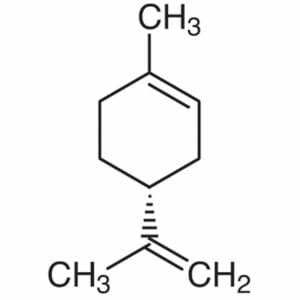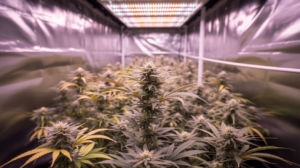What Are Terpenes? And Why Do I Care?

Guest post from:
permanentmarkerstrain.com
Unlock the Secrets of Terpenes: What Are They and How Do They Work?
Get ready to take a deep dive into the captivating world of terpenes and other fascinating compounds such as cannabidiol (CBD) and tetrahydrocannabinol (THC). Ever wondered why your favorite strain has a particular aroma, flavor, or effect? Much of the answer is hidden in these tiny chemical compounds.
In this article, we will unravel the mysteries surrounding terpenes and include crucial information gathered from numerous studies. You’ll learn all about their origins and functions and the vital role they play in the cannabis plant’s biology and appeal. Explore with us as we delve into the science behind these compounds, and get ready to gain a whole new appreciation for your cherished cannabis strains. Stay tuned—you’re about to embrace the magic that lies within every cannabis seed.
What Are Terpenes?
Terpenes are aromatic compounds found in many plants, including cannabis. These compounds not only give each cannabis strain its unique aroma and flavor profile, but they also influence the effects that strains produce. Some terpenes work alongside cannabinoids such as THC and CBD, to create what is known as the “entourage effect,” which may enhance the therapeutic benefits of the plant.
Moreover, terpene profiles can elicit a variety of effects on mood, stress levels, and more. Studies show that certain terpenes have their own therapeutic properties that may benefit human health independent of cannabinoids. Cannabis terpenes work in concert with cannabinoids and other compounds to produce effects that are unique to each strain.
Understanding Terpenes
The content of terpenes in different strains of cannabis adds another layer of complexity to their properties. These compounds play a significant role beyond just adding aroma and flavor to cannabis. In fact, these natural chemical compounds are found in many types of plants, including fruits, vegetables, herbs, and flowers. They are synthesized in the resin glands of plants and serve various purposes such as attracting pollinators or repelling predators. In essence, terpenes act as a defense mechanism for plants, protecting them from environmental stressors.
But what makes terpenes truly intriguing is their potential health benefits for humans. These aromatic compounds have been studied for their therapeutic properties, which can vary depending on the specific terpene present. For example, limonene—a common terpene found in citrus fruits and certain strains of cannabis—has been shown to possess anti-inflammatory, antioxidant, antiviral, antidiabetic, and anticancer properties.
Terpenes have also been found to interact with our body’s endocannabinoid system (ECS): a complex network of receptors involved in regulating various physiological functions such as mood, appetite, pain sensation, and immune response. Some terpenes may also enhance the effects of cannabinoids such as THC and CBD by influencing how they bind to ECS receptors. This interaction may explain why different strains of cannabis with varying terpene profiles can produce distinct effects on mood, stress levels, and overall experience.
Imagine you’re experiencing anxiety and decide to use an essential oil that contains linalool, a terpene abundant in lavender known for its calming effects. As you inhale the aroma of lavender oil containing linalool molecules, they travel through your olfactory system and interact with receptors in your brain. This interaction may help reduce anxiety symptoms by modulating neurotransmitters associated with stress responses.
While much research is still needed to fully understand the intricacies of each individual terpene’s effects on the human body, there is growing evidence suggesting that terpenes have great potential in alternative medicine and therapeutic applications. This ongoing exploration of terpenes has sparked curiosity and excitement among researchers and enthusiasts alike.
Now that we have grasped the concept of terpenes, their potential benefits, and other key parts of cannabis synthesis, let’s explore their natural occurrence in plants, with a particular focus on cannabis. Terpenes, the aromatic components not exclusive to cannabis but also existing abundantly in various plants around us, contribute to the distinctive scents and flavors we associate with different vegetation. For example, the smell of fresh pine needles or rosemary is attributed to pinene, a common terpene found in these plants. Looking at these compounds from a botanical perspective, we can observe that they occur in numerous plants, even beyond those we typically consider, including certain animals like swallowtail butterflies and termites.
- It’s estimated that there are around 200 terpenes produced by Cannabis sativa, the plant species that includes both hemp and marijuana.
- Terpenes such as limonene and pinene have been found to have anti-inflammatory and bronchodilator properties respectively, according to multiple studies.
- Research has shown that linalool, a common terpene present in lavender and other plants, has potent antimicrobial and neuroprotective properties.
Natural Occurrence in Plants and Cannabis
Cannabis, with its diverse range of strains, showcases an extravagant profile of terpenes, leading to distinct aromas and tastes. Each strain carries its unique combination and concentration of terpenes, resulting in a specific sensory experience; think of this as the strain’s botanical name. The wide range of terpenes present in cannabis includes limonene, myrcene, linalool, beta-caryophyllene, and many more. Upon review, the inclusion of terpenes is seen as a significant medical and therapeutic component of cannabis, though, like any substance, potential side effects should not be overlooked.
Consider two popular cannabis strains: Sour Diesel and Blueberry. Sour Diesel typically contains high levels of the terpene called limonene, known for its citrusy aroma, somewhat like an aromatherapy experience. On the other hand, Blueberry contains myrcene, which imparts a sweet and earthy scent reminiscent of ripe berries.
These naturally occurring terpenes in cannabis are believed to work synergistically with cannabinoids such as THC and CBD, analogous to the various components coming together in a symphony, through what experts call the “entourage effect.” This phenomenon suggests that the combined presence of cannabinoids and terpenes may enhance or modulate one another’s effects within our bodies.
The interplay between cannabinoids and terpenes is currently an area of active medical research as scientists strive to uncover their potential therapeutic applications and how these complex interactions influence our physiological responses. It’s an exciting time, with new discoveries shedding light on the secrets of these chemical compounds and their profound influence on the cannabis experience.
Terpenes and cannabinoids are both chemical compounds found in cannabis, but they differ in terms of their structure and effects on the body. Terpenes, as mentioned earlier, are richly aromatic compounds that give plants their distinctive smells and flavors. While terpenes are common in various plants such as lavender, pine, and citrus fruits, cannabinoids interact with receptors in our body’s endocannabinoid system and are specifically found in cannabis.
Difference Between Terpenes and Cannabinoids
Despite being relatively unknown a few years ago, today, terpenes share the stage with cannabinoids such as THC and CBD when discussing their therapeutic properties. These compounds work together synergistically through what is known as the “entourage effect.” The entourage effect refers to how different compounds in cannabis, including terpenes and cannabinoids, interact with each other to produce a combined effect that may be greater than the sum of their individual effects.
Terpenes themselves have been found to have various potential effects on the body. For example, the terpene limonene, commonly found in lemons and citrus fruits, has been studied for its anti-inflammatory, antioxidant, antiviral, antidiabetic, and anticancer properties. Pinene, another terpene present in pine needles and rosemary, has a bronchodilator and anti-inflammatory effect. Linalool, abundant in lavender, has properties such as anti-inflammatory, antimicrobial, neuroprotective, antidepressant, anticancer, and anti-anxiety effects. Imagine using lavender essential oil to relax before bed or being uplifted by the scent of lemon; these experiences are attributed to the terpenes present.
The key takeaway is that both terpenes and cannabinoids contribute to the overall effects of cannabis strains. Understanding these components and the potential side effects can help provide a more complete picture of cannabis and its rich botanical and medical dimensions. While THC, CBD, and other cannabinoids have received more attention thus far, researchers are increasingly recognizing the potential of terpenes in creating unique experiences and providing potential health benefits. Some articles point toward the number of terpenoids that can be extracted from the cannabis flower, including weed, which can provide relief for certain ailments when inhaled through a vaporizer, enhancing the therapeutic effect of the vapor.
Now that we have a better understanding of the general differences between terpenes and cannabinoids, let’s take a closer look at some specific terpenes and their effects on the body. As we delve deeper into this, remember that a vaporizer can create vapor enriched with these beneficial compounds.
Exploring Specific Terpenes and Their Effects
One notable terpene is myrcene, which can be found in various plants including hops, mangoes, and lemongrass. Myrcene is known for its sedative effect and is often associated with promoting relaxation and sleep. It has also been recognized for its potential anti-inflammatory and analgesic properties that can bring significant relief to users.

Another terpene that makes up a good number of popular cannabis strains is beta-caryophyllene, which can be found in plants including black pepper and cloves. Beta-caryophyllene has shown promise as an anti-inflammatory agent and may have potential therapeutic applications in managing chronic pain and even certain conditions like arthritis.
Consider the soothing aroma of clove oil during dental procedures or the use of black pepper essential oil to relieve muscle tension; these experiences are partly attributed to beta-caryophyllene. When used in a vaporizer, the vapor produced helps intensify its effects.
The flower of cannabis strains high in humulene, which is also present in hops, sage, and ginseng, can provide an array of benefits. It exhibits potential anti-inflammatory and antibacterial properties. Some studies also suggest that humulene may aid in appetite suppression, making it a promising compound to explore for individuals struggling with weight management.
By understanding these specific terpenes and their effects, consumers can make more informed decisions when selecting cannabis products based on their desired outcomes or experiences. However, it’s important to note that research on terpenes is ongoing, and we can look forward to a growing number of studies exploring their mechanisms of action and therapeutic potential.
As we continue our exploration of terpenes, let’s now divert our attention to the role of three specific terpenes in cannabis strains: limonene, pinene, and linalool.
Terpenes are a diverse group of organic compounds found in a variety of plants, including citrus fruits, pine trees, and lavender. They contribute to the characteristic scents and flavors associated with these plants. Limonene, pinene, and linalool are three prominent terpenes known for their unique weed-like qualities and potential benefits when delivered as vapor.
Different terpenes have different effects on the body, such as myrcene for relaxation and sleep, beta-caryophyllene for managing chronic pain and arthritis, and humulene for potential appetite suppression. Understanding these specific terpenes can help consumers make informed decisions when selecting cannabis products based on their desired outcomes or experiences. However, more research is needed to fully comprehend their mechanisms of action and therapeutic potential. Additionally, limonene, pinene, and linalool are three specific terpenes commonly found in cannabis strains that play a significant role in their effects.
The Role of Limonene, Pinene, and Linalool
Limonene is frequently found in citrus fruits like oranges and lemons. It not only adds a pleasant aroma but also exhibits several intriguing properties. This terpene has been studied for its potential anti-inflammatory effects and antioxidant properties that can protect against oxidative stress. Moreover, limonene may have potential anticancer activity, with some research suggesting it could inhibit the growth of tumors. Additionally, this terpene has shown promise in promoting relaxation and reducing stress levels.
Imagine inhaling the refreshing vapor of a freshly peeled orange or applying a natural lemon-scented lotion. The limonene present in these fragrances might not only invigorates your senses but also provide potential health benefits such as reducing inflammation and promoting relaxation.

Pinene is commonly found in coniferous trees such as pine trees and is responsible for their distinctive scent. It comes in two forms: alpha-pinene and beta-pinene. Alpha-pinene is known for its potential anti-inflammatory properties that may help alleviate symptoms associated with conditions like asthma and arthritis when inhaled as a vaporizer-created vapor. Beta-pinene, a component found in some drugs and other substances, has been studied for its potential antimicrobial properties which can combat harmful bacteria. This compound is among the plethora of terpenes found in cannabis plants in varying concentrations.
Linalool is often associated with the calming aroma of lavender; however, it can also be found in a multitude of other plants such as rosewood and coriander. This terpene is renowned for its soothing effects on both the mind and body, catering to the wellness needs of a person. Linalool has the potential to reduce anxiety and induce relaxation due to its anxiolytic properties. Moreover, it has a considerable variety of potential therapeutic effects, including acting as an analgesic, potentially helping to alleviate pain and reduce inflammation.
Now that we have explored the roles of limonene, pinene, and linalool, and the different varieties of cannabis plants, let’s delve into the potential health benefits of terpene extracts.
Terpene extracts, with their diverse concentrations of bioactive components, have gained considerable attention for their potential health benefits. These derivatives can be sourced from various plants and exhibit a wide range of biological activities that make them intriguing for both traditional and alternative medicinal practices.
Potential Health Benefits of Terpene Extracts
One notable area where terpenes have shown promise is their antimicrobial activity. Some studies suggest that certain terpenes can inhibit the growth of bacteria and fungi, showing their potential value in combating infections. This efficacy of terpenes as an antimicrobial agent can work to a person’s advantage, combating conditions such as athlete’s foot or candidiasis.
Terpenes also possess anti-inflammatory properties that can be beneficial for numerous conditions associated with chronic inflammation, and studies have shown that specific terpenes may interact with our body’s endocannabinoid system to reduce inflammation.
Moreover, terpenes are being investigated for their potential anticancer properties. Some studies have demonstrated that certain terpenes can inhibit the proliferation of cancer cells and induce apoptosis (cell death) in vitro. For instance, certain varieties of cannabis plants, by virtue of their unique terpene concentrations, could be valuable in further cancer research.
Consider a hypothetical person, diagnosed with inflammatory bowel disease, seeking alternatives to manage their symptoms. Due to promising research on terpenes’ anti-inflammatory properties, a healthcare provider might recommend exploring a terpene extract such as beta-caryophyllene, a component found in many drugs, as a potential supplement to complement existing treatments.
Now that we have explored the potential health benefits of terpene extracts, let’s move on to understanding their production and processing methods.
Terpenes are fascinating compounds that play a vital role in the plant kingdom, offering a wide range of aromatic and medicinal properties. However, understanding how these compounds are produced and processed requires delving into the intricate world of plant biology and chemistry.
Production and Processing of Terpenes
The production of terpenes is initiated through the biosynthesis of two universal precursors: isopentenyl diphosphate (IPP) and dimethylallyl diphosphate (DMAPP). These precursors serve as building blocks for the construction of various terpene molecules found in numerous concentrations in different varieties of plants, including cannabis. Plants possess specialized enzyme systems that catalyze the conversion of these precursors into an immense diversity of terpenoid compounds. The process involves elaborate enzymatic reactions, including cyclization, rearrangement, and additional modifications that result in the formation of different terpene structures.
Consider this analogy: Think of IPP and DMAPP as Lego bricks, and the enzymes as skilled builders. Each enzyme performs a specific task like connecting, rearranging, or sculpting the bricks to create a unique structure. Similarly, plants use enzymes to manipulate IPP and DMAPP to build an incredible array of terpene molecules.
To better understand how terpenes are produced, let’s take a look at some examples:
| Terpene | Source | Examples |
| Limonene | Citrus fruits | Lemon, orange |
| Pinene | Pine trees | Pine needles |
| Myrcene | Hops | Cannabis strains |
| Linalool | Flowers | Lavender, jasmine |
| Beta-caryophyllene | Black pepper | Clove, black pepper |
These are just a few examples of the vast variety of terpenes found in nature. Each terpene has a distinct aroma and can contribute to the flavor, fragrance, and potential therapeutic effects of the plant it is derived from.
Once these terpenes are produced within plants, they can be processed and extracted in various ways for different applications.
Processing of Terpenes typically involves extraction methods to obtain the desirable compounds from plant sources. One common technique is steam distillation, where steam is passed through plant material to separate and capture volatile terpene molecules. Solvent extraction is another popular method, utilizing organic solvents like ethanol or hexane to extract terpenes from plant material.
Imagine you have a rose garden, and you want to collect the fragrant essential oils from the petals. You could use steam distillation by placing the rose petals in a still and passing steam through them. The heat causes the essential oils containing terpenes to vaporize, condensing them into a liquid form as they cool down. This liquid now contains concentrated terpenes.
Depending on the desired application, such as flavorings, fragrances, or medicinal purposes, further processing may be needed. This could involve refining or purifying the extracted terpenes through techniques like distillation or chromatography to remove impurities or separate different compounds.
What Are Terpenes?: Conclusion
In conclusion, terpenes are produced within plants through complex biosynthetic pathways involving specialized enzymes. These compounds offer an astonishing diversity of aromas and potential therapeutic effects. They can be extracted using various methods such as steam distillation or solvent extraction, and further processing may be required based on their intended use. Understanding how terpenes are produced and processed allows us to unlock their secrets and explore the wide array of possibilities they offer in industries ranging from fragrance and flavorings to pharmaceuticals and beyond.
Suggested Articles
;)
;)
;)




 14 Jul 2025
14 Jul 2025  5 min read
5 min read


 July 13, 2023
July 13, 2023 


RESPONSES (0)
No responses yet. Be the first to respond!